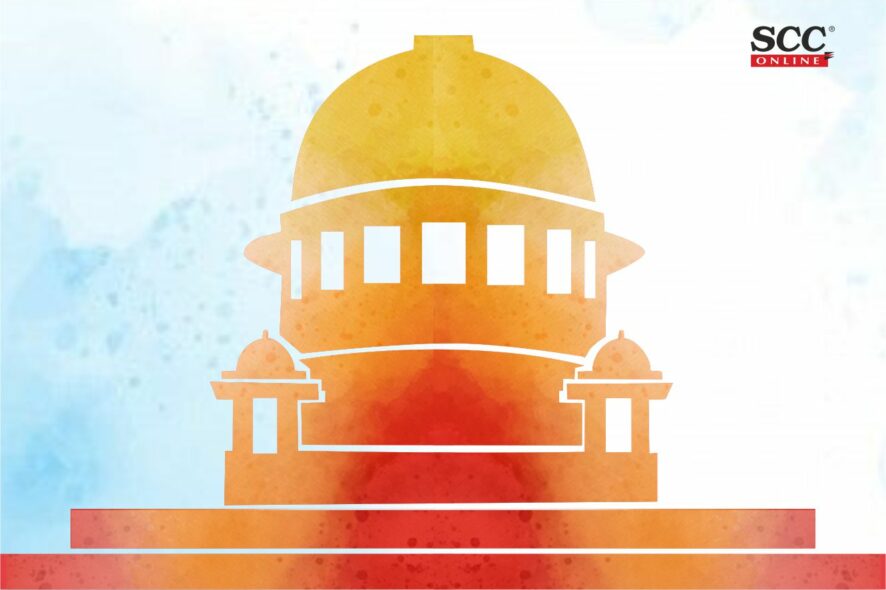Supreme Court: Dealing with the question as to ) when will the clock for calculating the limitation period run for proceedings under the Insolvency and Bankruptcy Code (IBC), the bench of Dr. DY Chandrachud*, Vikram Nath and BV Nagarathna, JJ has held that Sections 61(1) and (2) of the IBC consciously omit the requirement of limitation being computed from when the “order is made available to the aggrieved party”, in contradistinction to Section 421(3) of the Companies Act.
“… the omission of the words “from the date on which the order is made available” for the purposes of computation of limitation in Section 61(2) of the IBC, is a consistent signal of the intention of the legislature to nudge the parties to be proactive and facilitate timely resolution.”
When will the clock for calculating the limitation period run for proceedings under the IBC?
“The IBC is a watershed legislation which seeks to overhaul the previous bankruptcy regime which was afflicted by delays and indefinite legal proceedings.”
Keeping this object of the legislation in mind, the Court noticed that the power to condone delay is tightly circumscribed and conditional upon showing sufficient cause, even within the period of delay which is capable of being condoned. The IBC sought to structure and streamline the entire process of insolvency, right from the initiation of insolvency to liquidation, as a one-stop mechanism. Section 12(3) of the IBC prescribes a strict time-line for the completion of the corporate insolvency resolution process of one hundred and eighty days which is extendable by ninety days. The proviso to Section 12(3) imposes an outer-limit of three hundred and thirty days, including time taken in legal proceedings.
The Court explained that Section 12(2) of the Limitation Act allows for an exclusion of the time requisite for obtaining a copy of the decree or order appealed against. It is not open to a person aggrieved by an order under the IBC to await the receipt of a free certified copy under Section 420(3) of the Companies Act 2013 read with Rule 50 of the NCLT and prevent limitation from running. Accepting such a construction will upset the timely framework of the IBC.
“The litigant has to file its appeal within thirty days, which can be extended up to a period of fifteen days, and no more, upon showing sufficient cause. A sleight of interpretation of procedural rules cannot be used to defeat the substantive objective of a legislation that has an impact on the economic health of a nation.”
Section 61 of the IBC, begins with a non-obstante provision – “notwithstanding anything to the contrary contained under the Companies Act, 2013” when prescribing the right of an aggrieved party to file an appeal before the NCLAT along within the stipulated period of limitation. The notable difference between Section 421(3) of the Companies Act and Section 61(2) of the IBC is in the absence of the words “from the date on which a copy of the order of the Tribunal is made available to the person aggrieved” in the latter. However,
“The absence of these words cannot be construed as a mere omission which can be supplemented with a right to a free copy under Section 420(3) of the Companies Act read with Rule 50 of the NCLT Rules for the purposes of reckoning limitation. This would ignore the context of the IBC’s provisions and the purpose of the legislation.”
“When timelines are placed even on legal proceedings, reading in the requirement of an “order being made available” under a general enactment (Companies Act) would do violence to the special provisions enacted under the IBC where timing is critical for the workability of the mechanism, health of the economy, recovery rate of lenders and valuation of the corporate debtor.”
Hence, the omission of the words “from the date on which the order is made available” for the purposes of computation of limitation in Section 61(2) of the IBC, is a consistent signal of the intention of the legislature to nudge the parties to be proactive and facilitate timely resolution.
Is the annexation of a certified copy mandatory for an appeal to the NCLAT against an order passed under the IBC?
Rule 22(2) of the NCLAT Rules mandates the certified copy being annexed to an appeal, which continues to bind litigants under PART D 29 the IBC. While it is true that the tribunals, and even this Court, may choose to exempt parties from compliance with this procedural requirement in the interest of substantial justice, as re-iterated in Rule 14 of the NCLAT Rules, the discretionary waiver does not act as an automatic exception where litigants make no efforts to pursue a timely resolution of their grievance.
[V. Nagarajan v. SKS Ispat and Power Ltd, 2021 SCC OnLine SC 959, decided on 22.10.2021]
Counsels:
For Appellant: Advocate R Subramanian
For Respondents: Senior Advocate Neeraj Kishan Kaul
*Judgment by: Justice Dr. DY Chandrachud






